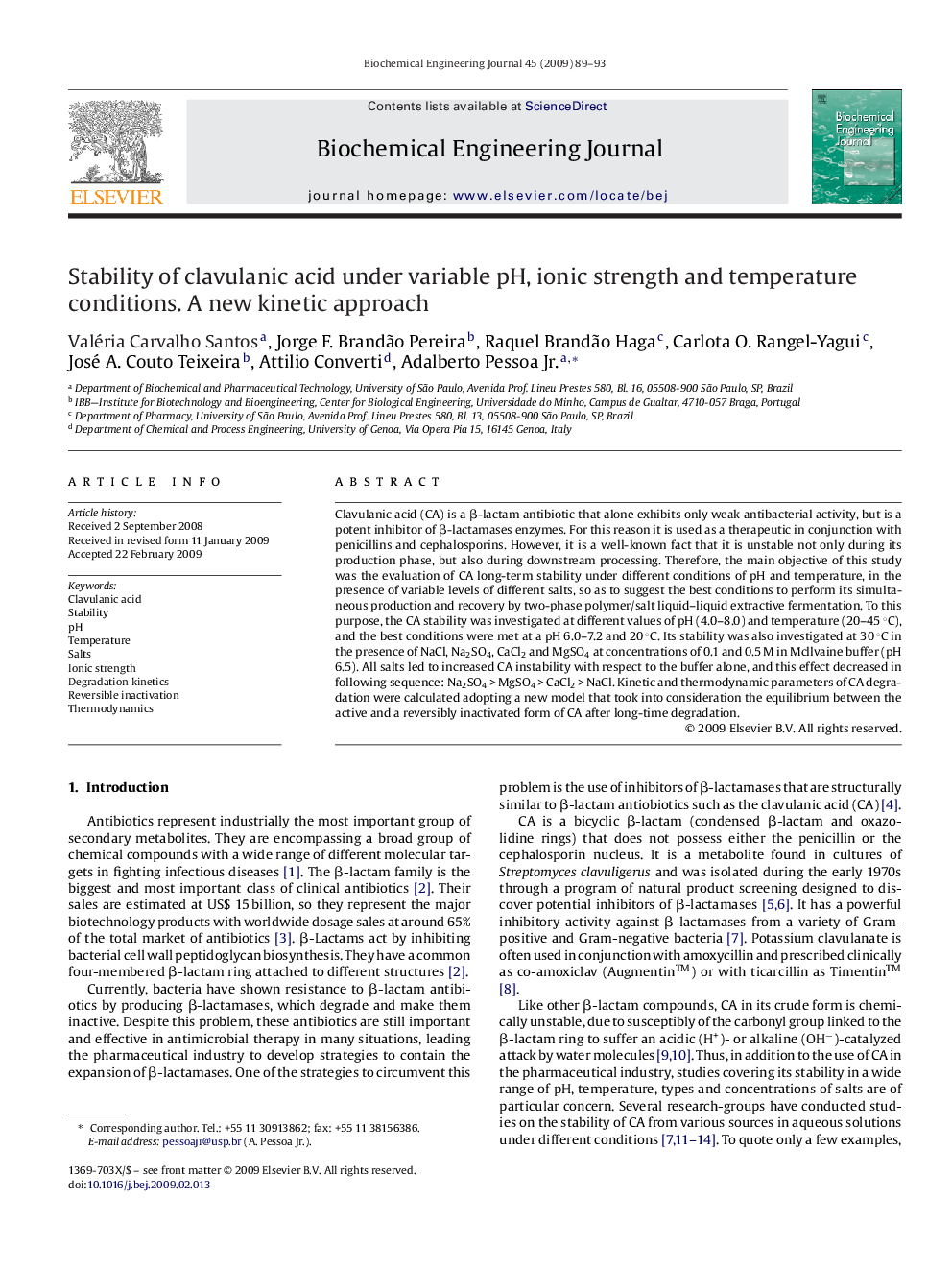| Article ID | Journal | Published Year | Pages | File Type |
|---|---|---|---|---|
| 4201 | Biochemical Engineering Journal | 2009 | 5 Pages |
Clavulanic acid (CA) is a β-lactam antibiotic that alone exhibits only weak antibacterial activity, but is a potent inhibitor of β-lactamases enzymes. For this reason it is used as a therapeutic in conjunction with penicillins and cephalosporins. However, it is a well-known fact that it is unstable not only during its production phase, but also during downstream processing. Therefore, the main objective of this study was the evaluation of CA long-term stability under different conditions of pH and temperature, in the presence of variable levels of different salts, so as to suggest the best conditions to perform its simultaneous production and recovery by two-phase polymer/salt liquid–liquid extractive fermentation. To this purpose, the CA stability was investigated at different values of pH (4.0–8.0) and temperature (20–45 °C), and the best conditions were met at a pH 6.0–7.2 and 20 °C. Its stability was also investigated at 30 °C in the presence of NaCl, Na2SO4, CaCl2 and MgSO4 at concentrations of 0.1 and 0.5 M in Mcllvaine buffer (pH 6.5). All salts led to increased CA instability with respect to the buffer alone, and this effect decreased in following sequence: Na2SO4 > MgSO4 > CaCl2 > NaCl. Kinetic and thermodynamic parameters of CA degradation were calculated adopting a new model that took into consideration the equilibrium between the active and a reversibly inactivated form of CA after long-time degradation.
